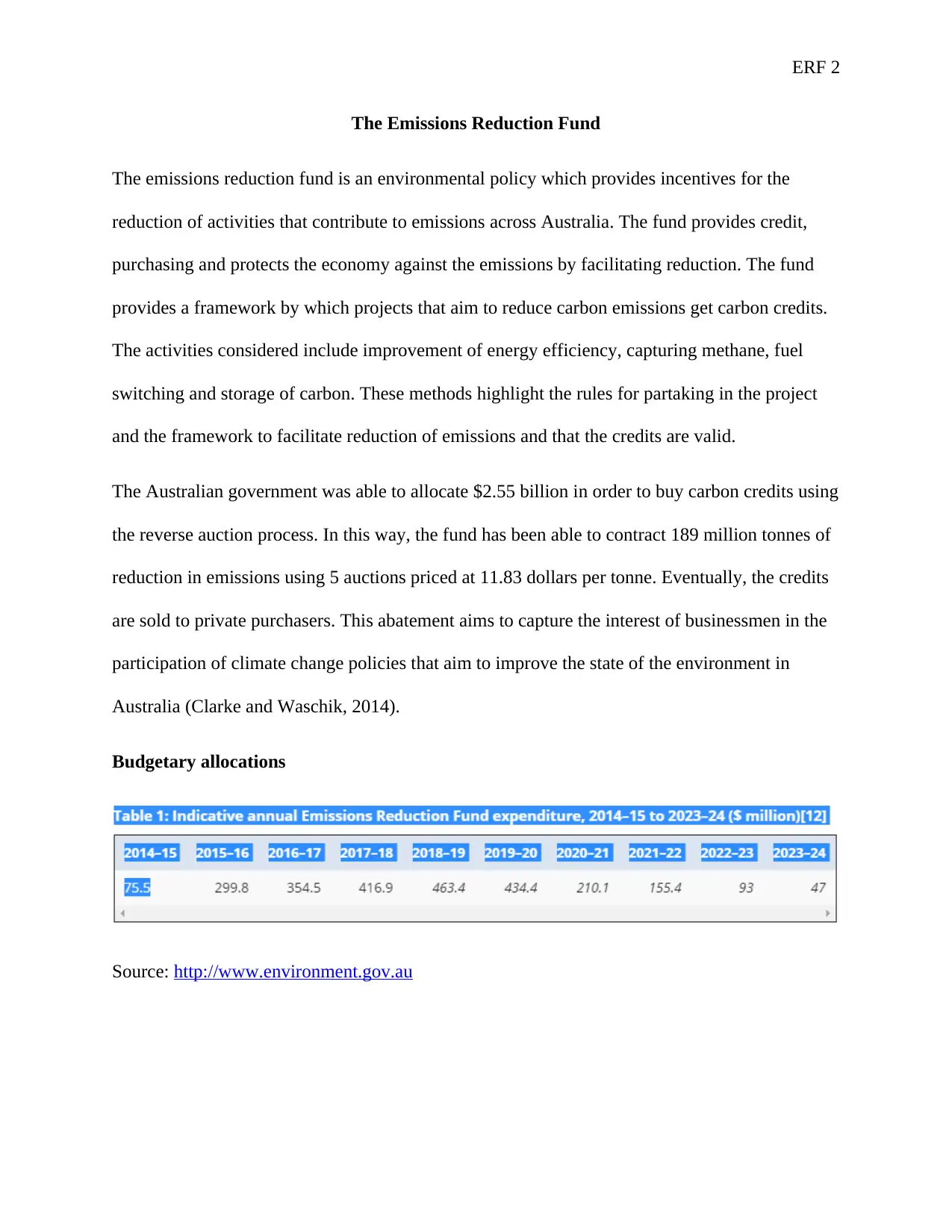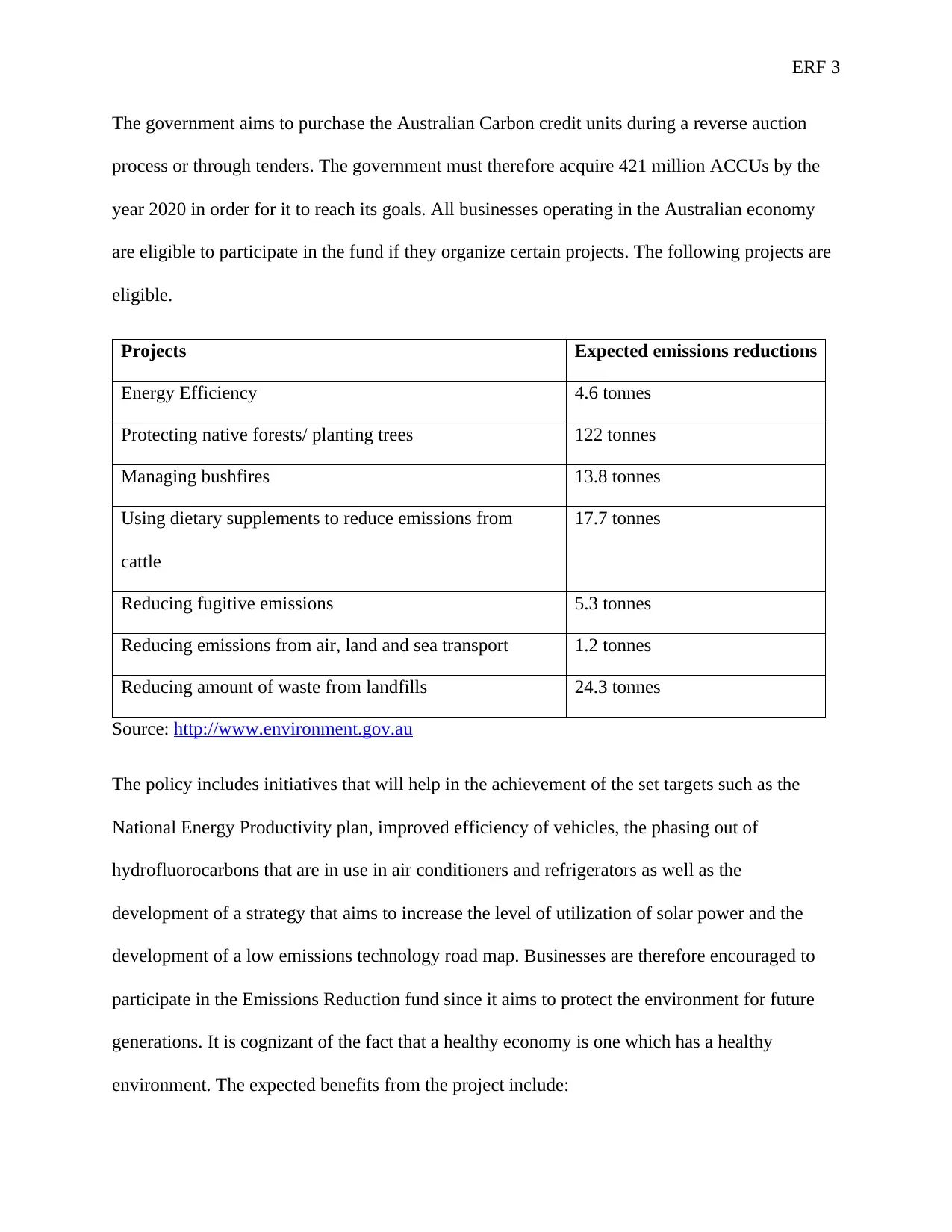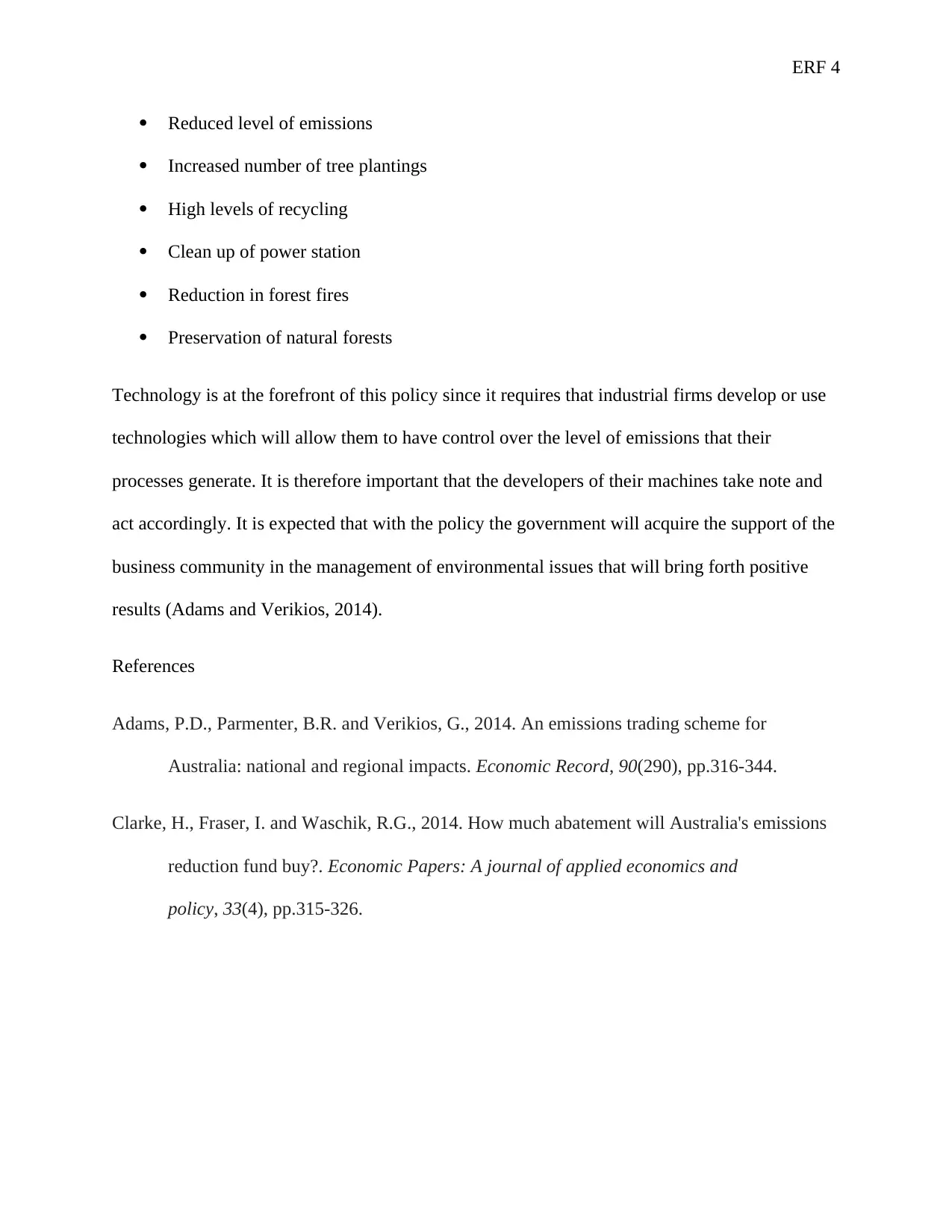Analysis of the Australian Emissions Reduction Fund: A Report
VerifiedAdded on 2020/03/16
|4
|653
|40
Report
AI Summary
This report provides an overview of the Emissions Reduction Fund (ERF) in Australia, a key environmental policy initiative. The ERF aims to reduce carbon emissions through various projects, including improving energy efficiency, capturing methane, and promoting fuel switching. The Australian government utilizes reverse auctions to purchase Australian Carbon Credit Units (ACCUs) from participating businesses. The report details the projects eligible for funding, such as those related to energy efficiency, forest management, and waste reduction. It also discusses the expected benefits, including reduced emissions, increased tree planting, and cleaner power stations. The policy encourages businesses to adopt technologies that control emissions, thus fostering a healthier economy and environment. The report references the government's targets and initiatives like the National Energy Productivity plan, and highlights the role of technology in achieving these environmental goals.
1 out of 4








![[object Object]](/_next/static/media/star-bottom.7253800d.svg)